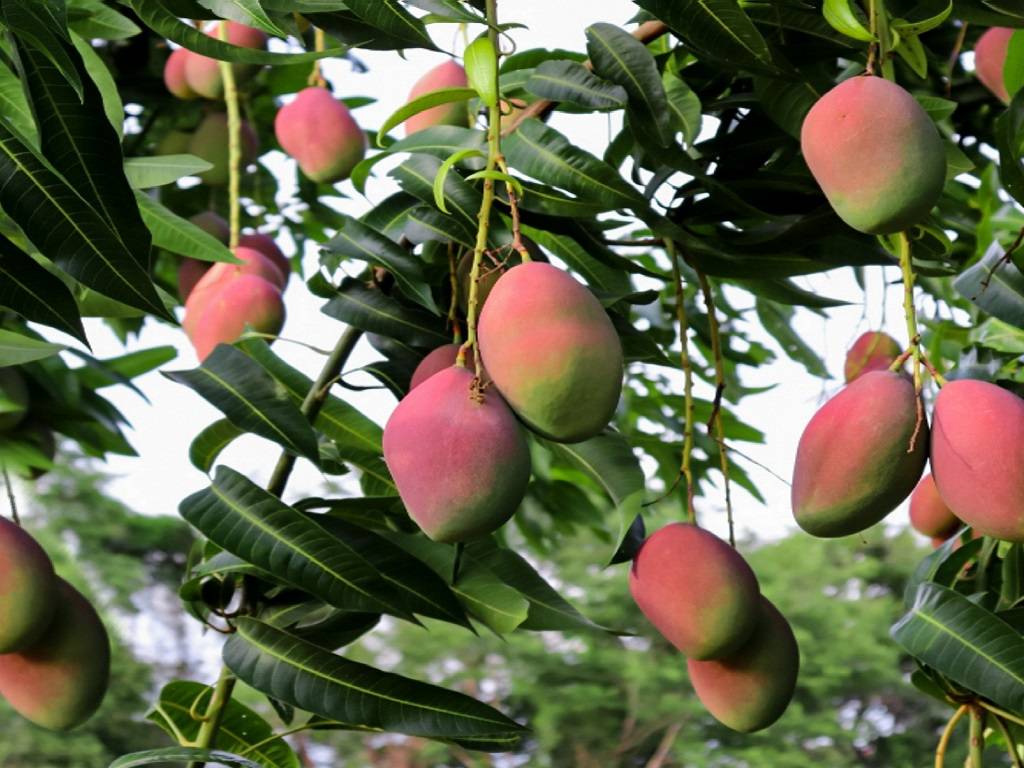
Mango is known as the "king of fruits" and is a favorite summer fruit of many people. Mango is a fruit plant of the Anacardiaceae family with the genus Mangifera. A mango tree can grow up to 30 - 40 meters in height. In India, mango cultivation is carried out in various states including Uttar Pradesh, Andhra Pradesh, Karnataka, Gujarat, Tamil Nadu, and Bihar. Early and untimely fruit fall from the tree is a serious problem that many farmers face hence this article will provide you with some prevention techniques for mango fruit dropping. Mango blossoms will produce far more fruit than the tree can support, resulting in significant fruit drops.
Mango trees produce fruit in three years and fruit develops swiftly. Mango tree maintenance must ensure that the tree continues to produce healthy flowers and fruits in the years ahead.
Causes of Fruit Drop in Mango
Insect-Pest
One of the major causes attributed to mango fruit fall is insect pest infestation. The biggest contributors include midges, caterpillars, hoppers, thrips, fruit flies, and seed weevils. The mango midge can cause fruit loss of up to 70%, and the mango hopper is a severe pest that can cause 25-60% fruit loss. The process by which insect damage causes mango fruit to abscise is likely as diverse as the harm they do.
Fungal Diseases
Powdery mildew and anthracnose are fungal infections that can cause mango fruit to drop prematurely. Anthracnose appears as dark stains on plant leaves or depressed lesions, while powdery mildew covers mango fruit, foliage, and twigs with a white, powdery substance. Both will result in reduced growth, branch dieback, and early mango fruit drop. Fungi and pests feed on fallen plant materials, such as twigs, leaves, blossoms, and fruits, increasing the likelihood of future issues
Pruning dead, dying branches and leaves from the tree on a regular basis will help to prevent any potential problems from spreading throughout the tree. In severe infestations, a fungicide may be required to save the tree.
Other Causes of mango fruit dropping
Mangoes dropping from stalks is a natural occurrence that is not caused by insects or other issues. A mango tree can only hold a specific percentage of its heavy fruit set, and only a small percentage of it will ripen into full-size fruit. The dropping of certain mango fruits is a natural part of the tree's thinning process, which allows it to better utilize the nutrients available. All of the immature fruits are fighting for food and water. Only the toughest fruits will make it.
The tree's fruit loss could be caused by a variety of circumstances. Weather fluctuations, insufficient soil moisture, loss of pollination, and ovule abortion are some of the main causes.
Prevention of Fruit Dropping in Mango Tree
Choose a bright and open location that is protected from high winds. The mango trees can grow in practically any soil, whether it's sandy, loam, or clay, as long as it has sufficient depth and drainage. A hormonal spray can be used to influence the fruit drop on mango trees. The fruit set is ensured by spraying hormones on blooms. Fruit retention can be improved by Naphthalene Acetic Acid (NAA) and Gibberellic Acid (GA3).
Other prevention methods include maintaining soil moisture to avoid the fruit drop which further results in the increased size of the fruit. Wind beaks can be installed all around the orchards to avoid fruit drops due to high-velocity winds throughout the growing season.
















